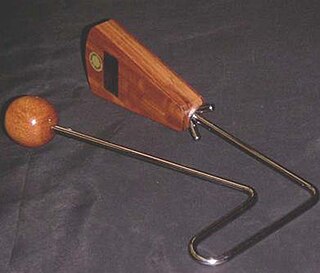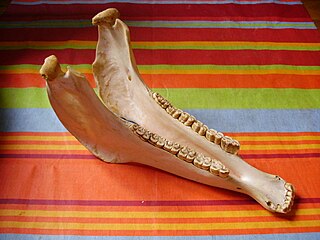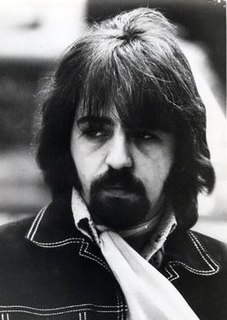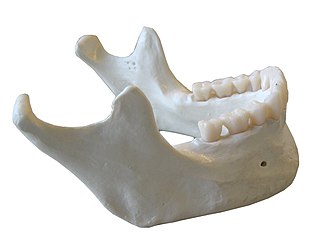
The euphonium is a medium-sized, 3 or 4-valve, often compensating, conical-bore, tenor-voiced brass instrument that derives its name from the Ancient Greek word εὔφωνος euphōnos, meaning "well-sounding" or "sweet-voiced". The euphonium is a valved instrument. Nearly all current models have piston valves, though some models with rotary valves do exist.

The Byrds were an American rock band formed in Los Angeles, California, in 1964. The band underwent multiple lineup changes throughout its existence, with frontman Roger McGuinn remaining the sole consistent member. Although their time as one of the most popular groups in the world only lasted for a short period in the mid-1960s, the Byrds are today considered by critics to be among the most influential rock acts of their era. Their signature blend of clear harmony singing and McGuinn's jangly twelve-string Rickenbacker guitar was "absorbed into the vocabulary of rock" and has continued to be influential.
The music of Belize has a mix of Creole, Mestizo, Garìfuna, Mayan and European influences.

The vibraslap is a percussion instrument consisting of a piece of stiff wire connecting a wooden ball to a hollow box of wood with metal “teeth” inside. The percussionist holds the metal wire in one hand and strikes the ball. The box acts as a resonating body for a metal mechanism placed inside with a number of loosely fastened pins or rivets that vibrate and rattle against the box. The instrument is a modern version of the jawbone.

The quijada, charrasca, or jawbone, is an idiophone percussion instrument made from the jawbone of a donkey, horse or mule cattle, producing a powerful buzzing sound. The jawbone is cleaned of tissue and dried to make the teeth loose and act as a rattle. It is used in music in most of Latin America, including Mexico, Peru, El Salvador, Ecuador, and Cuba. It was also historically used in the early American minstrel show.

Bone Machine is the eleventh studio album by American singer and musician Tom Waits, released by Island Records on September 8, 1992. It won a Grammy Award for Best Alternative Music Album and features guest appearances by David Hidalgo, Les Claypool, Brain, and Keith Richards. The album marked Waits' return to studio albums, coming five years after his previous effort Franks Wild Years (1987).
Paul Myers is a Canadian author, journalist, musician and songwriter. Until 2006, Myers worked as a musician and journalist in Toronto and Vancouver, where he became a television and radio personality. He is the older brother of actor and comedian Mike Myers.

Clarence White was an American bluegrass and country guitarist and singer. He is best known as a member of the bluegrass ensemble the Kentucky Colonels and the rock band the Byrds, as well as for being a pioneer of the musical genre of country rock during the late 1960s.

The double bell euphonium is a duplex instrument based on the euphonium. The larger bell produces the mellow tone of a standard euphonium; the second smaller bell has a brighter tone, similar to a baritone horn or valve trombone. The instrument is sometimes dismissed as a novelty, but has had a small number of enthusiastic adherents, although few professional musicians use it as their sole or primary instrument. The smaller bell can give more appropriate tone in the higher range of the instrument. The two bells can also be used for special effects, such as echoes, and using the distinctly different tone of the two bells for a single musician to give the effect of call and response.

Osteonecrosis of the jaw (ONJ) is a severe bone disease (osteonecrosis) that affects the jaws. Various forms of ONJ have been described since 1861, and a number of causes have been suggested in the literature.
Radium jaw, or radium necrosis, is a historic occupational disease brought on by the ingestion and subsequent absorption of radium into the bones of radium dial painters. It also affected those consuming radium-laden patent medicines. The symptoms are necrosis of the mandible and the maxilla, constant bleeding of the gums, and (usually) after some time, severe distortion due to bone tumors and porosity of the lower jaw.
"The life of Riley" is an expression meaning an easy, carefree life.

Tommy is a soundtrack album by The Who with contributions from numerous artists. The soundtrack was used in the 1975 Tommy film that was based on the original album that was released by The Who in 1969. Pete Townshend oversaw the production of this double-LP recording that returned the music to its rock roots, and on which the unrecorded orchestral arrangements he had envisaged for the original Tommy LP were realised by the extensive use of synthesiser. Although unmarked, according the August 9, 1975 issue of Billboard "QLP POLYDOR TOMMY/ORIGINAL SOUNDTRACK RECORDING $9.98" it is Quadraphonic encoded.

Marcus Oliver Johnstone Mumford is a British-American singer, songwriter, musician, record producer, and lead singer of the band Mumford & Sons. He also plays a number of instruments with the group, including guitar, drums and mandolin. He is married to English actress Carey Mulligan.

In anatomy, the mandible, lower jaw or jawbone is the largest, strongest and lowest bone in the human facial skeleton. It forms the lower jaw and holds the lower teeth in place. The mandible sits beneath the maxilla. It is the only movable bone of the skull. It is connected to the temporal bones by the temporomandibular joints.
Albert Sidney "Sid" Griffin is an American singer, songwriter, guitarist-mandolinist, bandleader, and author who lives in London, England. He led the Long Ryders band in the 1980s, founded the Coal Porters group in the 1990s, has recorded several solo albums and is the author of volumes on Bob Dylan, Gram Parsons and bluegrass music.
Charmer or Charmers or The Charmer or the Charmers may refer to:

Entelognathus primordialis is a placoderm from the late Silurian of Qujing, Yunnan, 419 million years ago.
A king is a male monarch.










